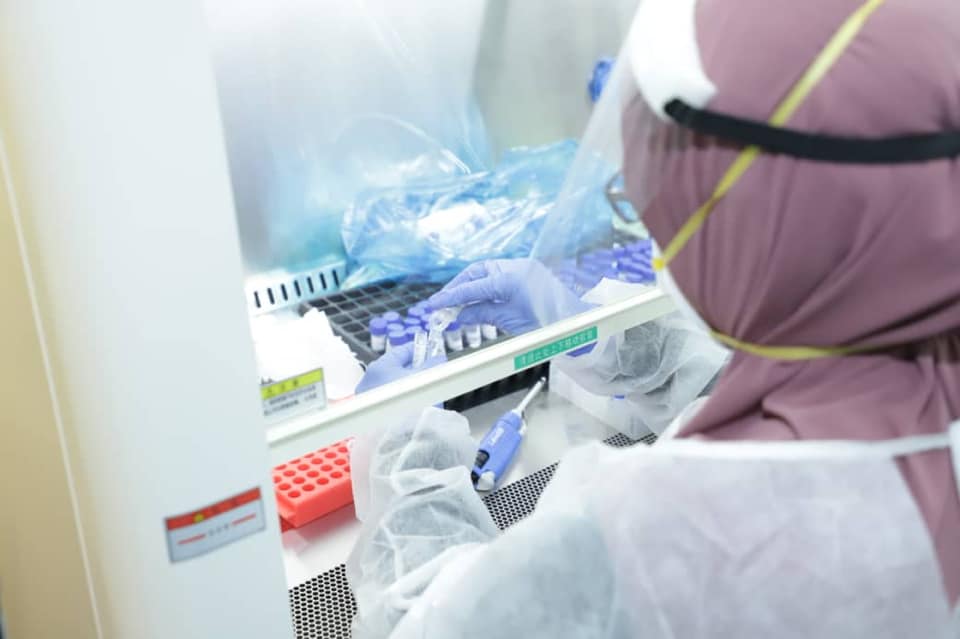KUALA LUMPUR, March 17 – Malaysia has ramped up Covid-19 genome sequencing ahead of the reopening of international borders in a fortnight, as the BA.2 Omicron subvariant spreads worldwide.
Malaysia Genome and Vaccine Institute (MGVI) director Ghows Azzam said Malaysia submitted 1,594 genome sequences of the SARS-CoV-2 virus to the virus genome database, GISAID, from March 1 to 16, which comprises about 0.3 per cent of 457,697 reported Covid-19 cases in that period.
He explained that genome sequencing by the IMR-MOSTI-KPT-MGVI consortium of public institutions was a little slow in January and February because of a global shortage of consumables.
“But we are picking up pace again,” Ghows told CodeBlue yesterday.
He estimated Malaysia’s genomic sequencing capacity to rise in the months to come once more consumables arrive, but said it would take some time to reach the target of sequencing 5,000 samples a month.
Health Minister Khairy Jamaluddin announced last December that the government would increase whole genome sequencing (WGS) capacity to 3,000 samples monthly by January, and subsequently raise capacity to 5,000 samples a month.
Ghows said increasing genomic sequencing capacity to 5,000 samples monthly also depended on how much could be outsourced to private labs, adding that the consortium has already received the additional allocation from the Finance Ministry for this.
CodeBlue had asked Ghows to clarify how much genomic sequencing Malaysia has done, as GISAID publicly reported that 277 sequences were shared from Malaysia in the last 30 days as of March 10, or 0.04 per cent of reported Covid-19 cases.
Ghows also said 1,194, or 75 per cent, of the 1,594 sequences that Malaysia shared with GISAID since March 1 as of 10.43pm yesterday were the Omicron variant.
Of the 1,194 Omicron sequences, 452 were the BA.2 lineage that is reportedly even more transmissible than the original BA.1 subvariant. This means BA.2 comprises about 28 per cent of the total 1,594 sequences from the past 16 days.
Outbreak.info, which collects variant data from GISAID, shows BA.2 has been detected in at least 97 countries and 55 states in the United States as of March 15.
The New York Times cited a study in Denmark that found significantly higher risk of infection among household contacts from people infected with BA.2 than those with BA.1. Research in England found that a person with BA.2 takes less time on average to infect another.
BA.2 is reportedly fuelling multiple outbreaks in China, its worst Covid-19 crisis since Wuhan two years ago. Most of the 1,337 locally transmitted Covid-19 cases reported last Monday across several mainland cities – considered a large number for China – were in the far northeastern Jilin province. China has also locked down its tech and finance hub Shenzhen, a city of 17.5 million people that neighbours Hong Kong.
CNBC reported that Covid-19 cases are also increasing in the United Kingdom and several European countries, including Germany, France, Switzerland, Italy, and the Netherlands, attributed to the relaxation of Covid-19 restrictions and the spread of BA.2.
“The increased infectiousness of BA.2 is already out-competing and replacing BA.1, and we are likely to see similar waves of infection as other variants enter the population,” Lawrence Young, a professor of molecular oncology at Warwick University, told CNBC.
Prime Minister Ismail Sabri Yaakob previously announced that the government would reopen Malaysia’s international borders on April 1, exempting quarantine for fully vaccinated international travellers who only need to test before departure and within 24 hours on arrival.








